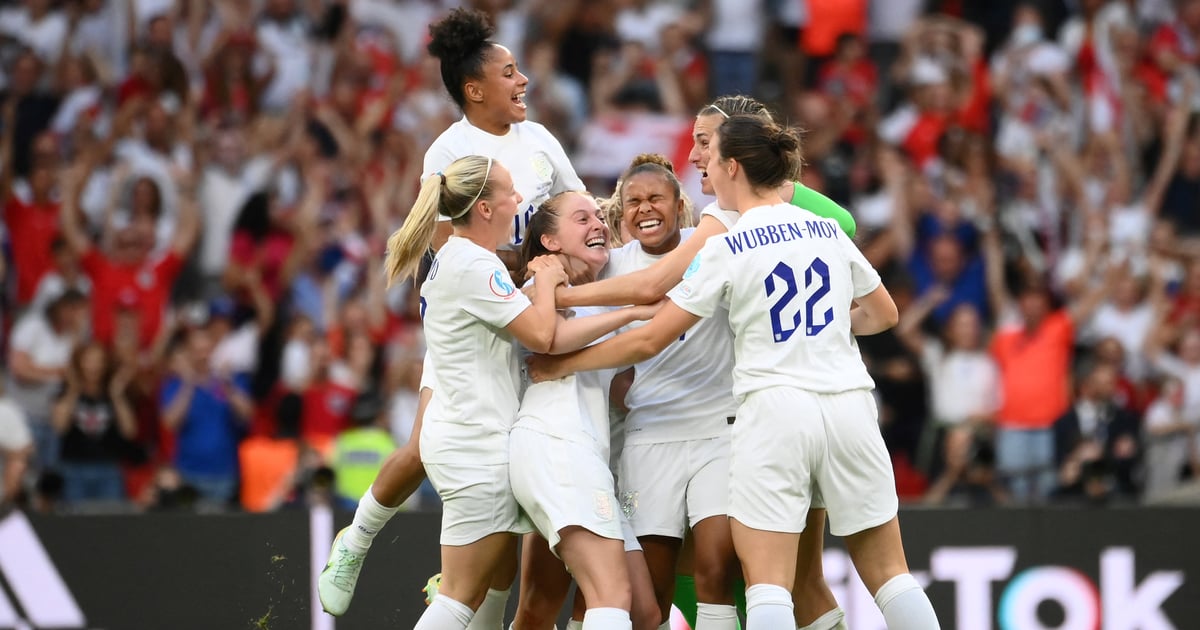


Women’s sports are at a time of transformation – and that includes their uniforms. As the FIFA Women’s World Cup approaches this summer, soccer teams are ditching their white shorts in a bid to be more rules conscious, marking a huge victory for women’s issues in sport.
After their historic victory at the Euros, the England women’s national football team swapped their white shorts for a more practical navy blue pair. The New Zealand national team will forgo white for teal. This move isn’t exclusive to World Cup-related teams either; Orlando Pride, part of the US National Women’s Soccer League, also announced a switch to black shorts in February, with the aim of “making players more comfortable and confident when playing during their menstrual cycle.
England players had raised concerns about wearing white on the pitch at this time of the month, and let’s face it, who would want to to want wear white shorts when actively bleeding? After discussions with the Football Association, the organization finally agreed to change the color to navy blue, which still adheres to the national kit color scheme.
The team rallied in an unofficial campaign to have the uniform changed once and for all. Striker Beth Mead has contacted Nike, the official kit manufacturer of England, who recently unveiled their first menstrual base layers for the upcoming FIFA Women’s World Cup, to discuss the change. “It’s very nice to have an all-white kit, but sometimes it’s not practical at this time of the month,” the 27-year-old Arsenal striker said, according to The Guardian. “We deal with it [menstruation] as best we could, but we discussed the issue of the shorts together as a team and conveyed our views to Nike.”
As well as removing the white shorts from the range, Nike will also supply their new menstrual shorts as a uniform base layer for the 13 federations they outfit at the World Cup.
 Image source: Nike
Image source: Nike
The move for football uniforms follows Wimbledon’s dress code change in 2022. The all-white dress code at the Wimbledon tennis championships had existed since the Victorian era, but it disproportionately affected female athletes during their menstrual cycle . Organizers changed this rule last summer to allow female competitors to wear medium to dark colored undershorts, as long as they are no longer than the player’s shorts or skirt.
Rules have a significant impact on the participation of women and girls in sport. Greater Manchester Moving found that 64% of girls aged 16-17 will have quit sport by the time of puberty, while 42% of 14-16 year olds say their period prevents them from engaging in physical activity. ‘school. .
When Nike was developing their new short period, they came to a similar conclusion: In their “Teen Girl Insights Project”, Nike researchers found that, “at age 14, girls drop out of sports twice as often as boys. And by age 17, an age at which most have reached puberty, 51% will have quit,” Lisa Gibson, senior apparel innovation project manager for the Nike Advanced Innovation Collective, told POPSUGAR. “We know menstruation isn’t the only reason she’s quitting the sport, but it’s a big part of it…that fear of bleeding is very real; it doesn’t just last when you’re a teenager, it’s really lasts your whole adventure with menstruation.”
Elite athletes, like those competing in the World Cup, are not immune to bleeding concerns. In fact, these fears are probably even more acute on the world stage and at such a high level. “Professional female footballers play two 45-minute halves without a break or time out,” Jordana Katcher, vice president of women’s sportswear at Nike, said in a statement. “Many told us they could spend several minutes on the court, fearing they might leak due to their periods. When we showed them this innovation, they told us how grateful they were to have this short. – footage to help them gain confidence when they can’t leave the pitch.”
Some athletes choose to use hormonal contraceptives like birth control pills to try to control their periods so they don’t have to worry about bleeding during important events. For example, a 2018 study of 430 elite female athletes from 24 different sports (including football) found that around half used some form of hormonal contraception, and of this group, around 12% said that they liked being able to reduce the number of periods. They had known. But birth control is an extremely personal choice, and the same solution doesn’t work for everyone. Playing during menstruation can be difficult for those with heavy periods, including women with conditions like endometriosis or polycystic ovary syndrome (PCOS).
These statistics once again highlight the inequality affecting women’s sport, which affects everything from research on female athletes, available training resources and media coverage to fair compensation. The Brazilian, England and USA national teams have all made great strides in getting equal pay to their male counterparts, but the fight for equal pay in sport has only just begun – and so has the movement for greater awareness. how the menstrual cycle affects athletes. .
By changing the color of their uniform shorts, teams like England and New Zealand are helping to lead the charge.
—Additional reporting by Lauren Mazzo



